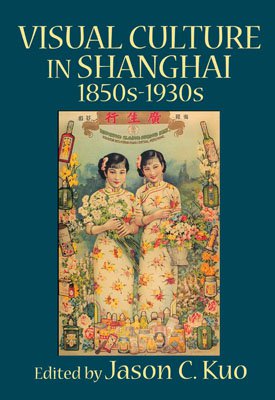
About the Author
Jason Kuo is a professor at the University of Maryland in the Department of Art History & Archaeology. He is the author of Wang Yüan-ch’i’s Art of Landscape Painting; Trapping Heaven and Earth in the Cage of Form; Innovation within Tradition:The Painting of Huang Pin-hung; The Austere Landscape:The Paintings of Hung-jen; Word as Image: The Art of Chinese Seal Engraving; Chen Chikwan; Practicing Art History and Art Criticism; Transforming Traditions in Modern Chinese Painting: Huang Pin-hung’s Late Work, Rethinking Art History and Art Criticism, and others.
VISUAL CULTURE IN SHANGHAI, 1850s-1930s
Jason C. Kuo, ed.New Academia Publishing, 2007
372 Pages, 151 Illustrations
ISBN 978-0-9787713-5-5 Paperback
ISBN 978-0-9787713-8-6 Hardcover
$36.00 Hardcover
For BULK ORDERS, order directly from New Academia Publishing.
Queries: orders@newacademia.com
About the Author
Jason Kuo is a professor at the University of Maryland in the Department of Art History & Archaeology. He is the author of Wang Yüan-ch’i’s Art of Landscape Painting; Trapping Heaven and Earth in the Cage of Form; Innovation within Tradition:The Painting of Huang Pin-hung; The Austere Landscape:The Paintings of Hung-jen; Word as Image: The Art of Chinese Seal Engraving; Chen Chikwan; Practicing Art History and Art Criticism; Transforming Traditions in Modern Chinese Painting: Huang Pin-hung’s Late Work, Rethinking Art History and Art Criticism, and others.
About the book
Visual Culture in Shanghai, 1850s-1930s is a study of formal and informal meanings of Haipai (“Shanghai School” or “Shanghai Style”), as seen through the paintings of the Shanghai school as well as other media of visual representation. The book provides us a point of entry into the nexus of relationships that structured the encounter between China and the West as experienced by the treaty-port Chinese in their everyday life. Exploring such relationships gives us a better sense of the ultimate significance of Shanghai’s rise as China’s dominant metropolitan center. This book will appeal not only to art historians, but also to students of history, gender studies, women’s studies, and culture studies who are interested in modern China as well as questions of art patronage, nationalism, colonialism, visual culture, and representation of women.
Praise
“This book constitutes a significant contribution to the literature about a period and a city that were pivotal to the emergence of modern China.”
-Richard K. Kent, Franklin & Marshall College.
“This book navigates the complexity of Chinese modernity…. It bridges, conceptually and visually, the China of the past to present-day Shanghai, the symbol of the urban economy of 21st-century China.”
-Chao-Hui Jenny Liu, New York University.
“Shanghai was the rising and dynamic metropolis, where many aspects of modernity were embraced with enthusiasm. Pictorial art was no longer the domain of the elite, but professionalization, commercialization, popularization, and Westernization contributed to the dissemination of images to a larger and diverse audience.”
-Minna Törmä, University of Helsinki.





 Coming Soon
Coming Soon Awards
Awards